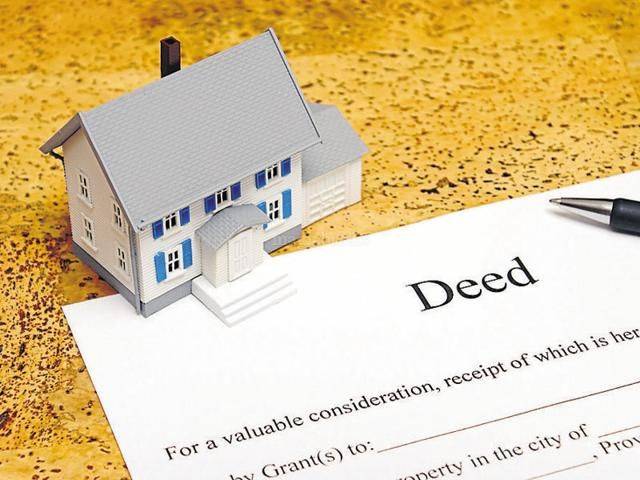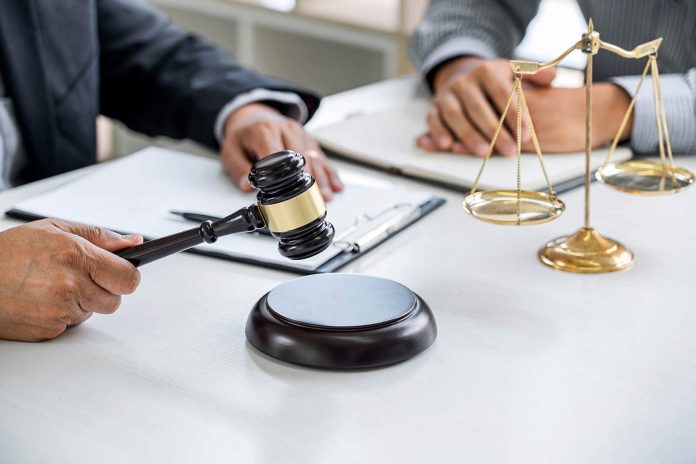Simplifying
“Conveyance” for you
What is a Conveyance Deed?
A Conveyance Deed is an important legal document because it transfers ownership of land on which your building stands from a developer or the previous landowner to a cooperative housing society. In Mumbai and other cities of Maharashtra, many societies are faced with the challenge of obtaining their rightful conveyance of land.


What is Deemed Conveyance?
If you don’t have your conveyance from the developer or the previous landowner, you face a major problem when your society goes in for redevelopment because of its old and dilapidated structure. In view of many societies facing the challenge of obtaining conveyance, in 2008, the Maharashtra government introduced the concept of deemed conveyance, and in 2010 published rules pertaining to it.
How are Conveyance and Deemed Conveyance different?
While Conveyance is the right of ownership of the building and the plot on which the society building is built, the deemed conveyance is the right of ownership received through the competent authority appointed by the state, if the builder/previous owner refuses to give you the conveyance.

Why Is Conveyance Crucial?
If you don’t have your conveyance from the developer or the previous landowner, We are here to assist you.
Why is Conveyance Crucial?
Conveyance is crucial for a housing society because it is proof that you are legal ownership over the property and for undertaking redevelopment projects.
Why is Conveyance not Crucial?
Many times, builders or landowners conveniently fail to convey the title of land and building to housing societies, because they have their own interests to protect.
What you should do.
Under the concept of deemed conveyance, a society that does not receive the conveyance is entitled to apply to the Deputy District Registrar (DDR) of Cooperative Societies for one.
DDR of Cooperative Societies would then verify all the necessary documents submitted for considering the application, hear both sides of the issue – the society and the developer, and then pass an order conveying the land in favor of the society.


What does the Law Say?
As per Section 11 of the Maharashtra Ownership Flats Act (MOFA), 1963, the promoter (the builder or the landowner) is mandated to convey the title of the land and building, to the cooperative housing society within four months of the society/or a legal body of flat buyers being established.
If the developer fails to do this, the society can apply for a deemed conveyance through a competent authority under the Maharashtra Ownership Flat Act (MOFA)
What is the significance of deemed conveyance?
- By obtaining the Deemed Conveyance from the developer or the landowner, societies can get the ownership of the land legally conveyed in their name. This is important because title documents are used to identify any movable/immovable property ownership. For e.g. immovable properties are recorded and identified on the basis of Survey No., Hissa No. and such other identity marks in government records. Only then does the purchaser become the legal owner, and this will allow them to develop rights on the piece of land.
- When property transactions are recorded in government records, it becomes conclusive evidence of property ownership. And, to make entries in Government records, a Conveyance Deed has to be executed.
- TDR refers to the rights obtained by a property owner in the form of a certificate, The certificate is authorized by a competent authority and has economic value.
- It makes the land marketable to prospective buyers. When a particular person of society has paid fully for his flat and is in possession of it but title documents are still in the name of the original owners, the purchaser will not have a free and marketable title on the said property. It is only after proper conveyance that the purchaser will derive a free and marketable title over the property. A marketable title means that the property has no defects, and can be purchased.
- Further, the society can retain the additional FSI and take advantage of Transferable Development Rights (TDR). FSI is the maximum permissible floor area, that a builder can build on a particular plot or piece of land. FSI is calculated by the ratio of building floor covered area to the area available on the land.
- With deemed conveyance, a society can get permission for the redevelopment of its structures from the planning authorities.
Advantages of Conveyance Deed
- Proper Title
- Retaining the additional FSI (Floor, Space, Index)
- The property will be free and marketable
- Loans can be raised by mortgage for building repairs
- Permission to reconstruct the builder will be given by
planning authorities. - You can construct a new building by using Transferable Development Rights (TDR) or give the redevelopment rights to the builder and get the additional area and the corpus with new amenities.
- You will get compensated for hoarding rents, telephone communication tower rents, etc.

Know the eligibility of your society’s deemed conveyance
What documents are necessary for a deemed conveyance??

Documents required for deemed conveyance
For obtaining deemed conveyance ensure you tick off all the items on this check this. The applicant will have to furnish the following papers and document proofs.
- Application Form VII to the District Deputy Registrar, Cooperative Societies, with a court fee stamp of Rs 2,000.
- List of members, in the prescribed format.
- Index – II for each member, issued by the Sub-Registrar of Assurance.
- An affidavit is submitted before the notary or executive magistrate.
- Proof of stamp duty payment and registered agreement for sale for all individual apartments.
- A true copy of the society’s registration certificate.
- A copy of the development agreement between the landowner and the builder.
- A copy of the legal notice issued to the original owner/ developer for executing conveyance.
- Contact details of the developer/ original owner like the address and telephone number.
- Draft conveyance deed or declaration proposed to be executed in favor of the applicant.
What are the court fees for obtaining Deemed Conveyance?
To file an application for obtaining a ‘certificate of deemed conveyance’, a society has to affix a court fee of Rs 2,000, along with the mandatory documents being submitted.
Documents obtained from the City Survey Office
- City survey (CTS) plan.
- Property card registration or 7/12 extract of the land and village form no 6 (mutation entries).
Documents obtained from the collector’s office
- Copy of the non-agricultural order.
- Certificate under the Urban Land Ceiling Act, 1976.
Documents obtained from the municipal authority
- Building or structure plan approved by the authority concerned.
- Location plan.
- Intimation of disapproval (IOD).
- Commencement certificate.
- Building completion certificate
- Occupancy certificate (not mandatory).
- Proof of payment of property taxes.
Other documents to be submitted
- Search report of the land, issued by the solicitor or advocate.
- Title certificate of the property issued by the solicitor or advocate (the title search should be for the last 30 years).
- Land measurement map/architect’s certificate.
- Certified copy from a panel architect about the utilization of full FSI or the leftover FSI, if any, with respect to the said property or plot.
Download the toolkit for Deemed Conveyance
- Step-by-step guide (E-book)
- Form VII (MS-Word)
- Prescribed Format for the list of members
(MS-Excel)
You can speak with Zipgrid’s legal expert to get answers to your questions on deemed conveyance
Click below to book a FREE session (worth ₹10,000) with our legal expert.
The world is speaking about Conveyance
State co-operative department organizes awareness drive on deemed conveyance
To spread awareness on deemed conveyance, the Maharashtra cooperative department at the start of 2021, supported by the Pune District Cooperative Housing Society Association, initiated a drive among housing societies, to spread awareness about deemed conveyance.


Activists make noise over the non-implementation of government regulation on deemed conveyance
The housing department, in 2013, issued a government resolution or GR for holding a deemed conveyance Adalat every month. This was with the intention to address contentious issues related to deemed conveyance. As no progress has been made on this front since the GR was first introduced, several citizens in the State have voiced their concerns, by writing to the district collector and the State Government.
The GR issued in 2013 has stated that as per the amendments in the Maharashtra Ownership Flats (Regulation of the promotion of construction, sale management and transfer act 1963), the Maharashtra government has appointed a competent authority under Section 5, and powers were conferred upon them to implement the deemed conveyance process
Facts about conveyance
- There are more than 30,000 housing societies in Mumbai and over a lakh in Maharashtra are without conveyance deed.
- In May 2017, as many as 50,000 housing societies in the metropolitan region do not have ownership of land on which their buildings stand, and as a result, they are facing difficulties in either redevelopment or maintenance.

